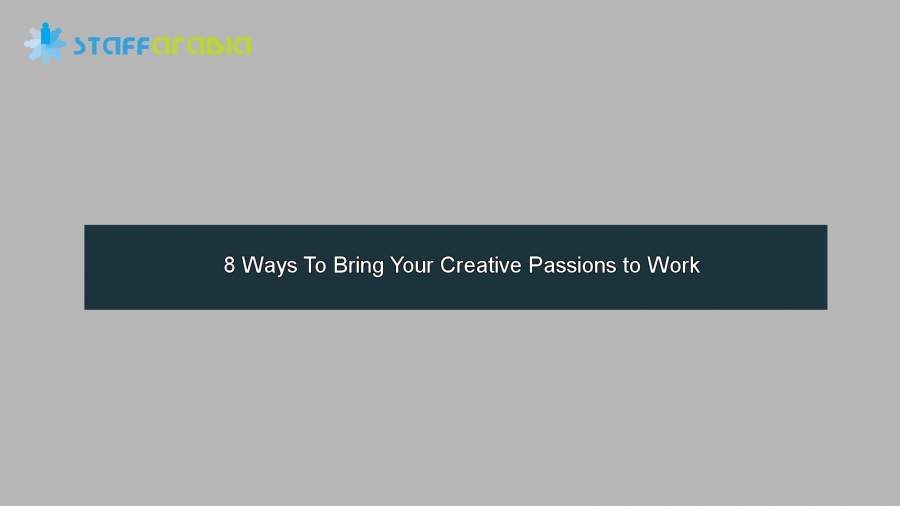
A “creative” person I worked with at a “trucking company” developed a reputation as frustrated and bitter over her 30-year career. At her retirement, I inquired about her plans, particularly since she was relatively young. Asking if she hoped to create more art since she was now freed from cranking out corporate brochures, she told me, “No.” Instead, she was going to work at a garden center, since she loved plants and being outdoors.
While her answer was startling, the next time I saw her confirmed the impact this life change made. She was barely recognizable! Her long white hair was cut short and stylishly, she was tanned, and had a huge smile you couldn’t wipe off her face. All this, a result of finally expressing her creativity as she truly enjoyed.
Makes you wonder why, if your creative passions involved the outdoors and plants, you’d sit in a cube for 30 years working on sales collateral while your bitterness festered? Maybe she felt stuck because she didn’t think a garden center job would pay enough. Yet surely, there were other alternatives.
Many people find themselves in similar situations. You have creative pursuits you enjoy OUTSIDE work, but can’t imagine incorporating them into your day job to make it more enjoyable. If you feel that’s your situation, it doesn’t have to be. Using my “graphic artist in a decidedly non-creative trucking company friend” (let’s call her Betty) as an example, here are 8 ways to incorporate your creative passions into your job:
1. Don’t complain about your situation. Start figuring out how to adapt it.
Betty was all about complaining, which stopped people from wanting to work with her in new, creative ways. Instead of griping, invest your energy in thinking strategically about how you could adapt your work to be more creative. What co-workers, customers, situations, projects, programs, products, and critical business needs might be waiting to incorporate the creative skills you’re truly passionate about using?
2. Map out how your interests could tie to your job.
Step back to generalize and innovate on how your creative passion could connect to your current company’s business. This will start creating potential hooks you can use to attach your passion to your job. In Betty’s case, working with plants at a garden center could be generalized to cultivating and growing things, design, customer interaction, outdoor settings, etc. Once you’ve moved from “working in a garden center” to “what happens at a garden center,” you have the seeds (pun intended) to plant in your regular job for new sources of creativity to spring up.
3. Do some thinking on your own to imagine hidden opportunities.
After thinking about your outside passion, consider your company and where it might need the same talents, experiences, and results related to your creativity. In the trucking company example, Betty’s list could have included: landscaping around our headquarters, design and planning for field facilities, plants in offices and common areas inside our building, sprucing up corporate meetings and conferences, and employees’ club fund raising projects and events. Any of these (and more) could easily have components tied to gardening and design.
4. Put your interests into the language of business.
When trying to introduce creativity, you’ll hit brick walls if you talk in the language of your creative passion. If Betty walked in and announced, “I want to work with flowers here at the trucking company,” her ideas would have been dead on arrival. Instead, consider the language you can use to express your interests. Betty could have used vocabulary related to events and facilities to initiate conversations.
5. Find like minded people.
Ask others about their outside creative interests: “What do you like to do for fun? How do you express yourself creatively?” If the company is of any size and your creative interests are anywhere near the mainstream, you’ll likely discover others who share your passions. Learn what ideas they may have and how they react to your possibilities for bringing your creativity more squarely into the workplace.
6. Volunteer for smart opportunities even if they’re out of the spotlight.
Start expending energy to insert yourself into smart opportunities you’ve identified. In Betty’s case, the first stop should have been the company employees’ club since it offered opportunities to help plan a summer get together (being outdoors), coordinate a holiday party (floral design and decoration), sponsor fund raisers (a plant sale), and at one time, send floral arrangements to hospitalized employees (direct interaction w/ florists). While Betty’s is a specific instance, the same concept applies for you. Map out and implement the plan to seize opportunities (even if they’re small ones) and increase your workplace creativity.
7. Begin doing even more.
Once you start to get a reputation for contributing successfully in innovative ways, the word will spread, and new opportunities will surface. In our company, we ultimately started sponsoring major events for hundreds of customers – both meetings and NASCAR events. New and enhanced creative approaches were always desirable and could certainly have included floral design as an element. Since no one wanted to work with Betty, however, she was never asked to participate. Being able to realize those first small successes, however, can lead to new opportunities to do even more creatively.
8. If it’s not working, don’t stick around and be miserable.
Betty chose to stay 30 years making herself and those around her miserable. If you try this approach, and for whatever reasons it doesn’t work in your particular company, look for another job rather than fuming. In a similar situation, our neighbor was a nurse who also wanted to work at a garden center. One day, she quit her nursing job and made the switch. The garden center only paid about 1/3 of what nursing did, so after a few years of blissful work at a garden center, she went back into another area of nursing. Not only does she have the memories to sustain her, she still works part-time at the garden place, keeps in touch with friends she made, and always knows she can make the switch again in the future. She’s happy, not miserable, realizing she has options.
I used these tips in the same not particularly creative company as Betty to uncover ways to introduce my love for art, music, and speaking into my job to make it much more fulfilling. While it wasn’t always exactly how I wanted things to be, it was so much better than never being able to exercise my creative passions. Whether you try just one tip or use them in sequence as a personal success plan, make sure you get started today!
















